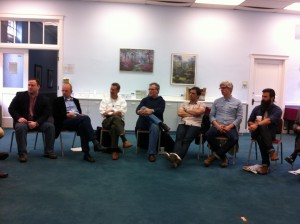
When Vatican II changed how the Catholic Church related to the world, as well as to the proclamation of the gospel, things really began to move in a new direction. The now popular Catholic commitment to the “New Evangelization” entered the Catholic missiological vocabulary in the 1980s but found its first prominent expression in 1992 at the Council of Latin American Bishops (CELAM) 4th General Conference – “New Evangelization, Human Development, Christian Culture.” Pope John Paul II had been using the term since 1984.
Interestingly the first new office of the Roman Curia initiated by Pope Benedict XVI (2010) was the Pontifical Council for the New Evangelization. This development gave prominence and permanence to a vision of mission proposed by Pope John Paul II in a 1996 address in Germany:
The new evangelization is therefore the order of the day. . . .The task of evangelization involves moving toward each other and moving together as Christians, and it must begin from within; evangelization and unity, evangelization and ecumenism are indissolubly linked with each other. . . .Because the question of the new evangelization is very close to my heart as bishop of Rome I consider overcoming the divisions of Christianity ‘one of the pastoral priorities’” (quoted by Brother Jeffrey Gros in “The New Evangelization,” 1).

The Southern Baptists (SBC) formally withdrew from the Baptist World Alliance more than a decade ago. (This was a result of the conservative shift in the SBC.) In 2001 the SBC withdrew from all formal conversations with the US Catholic Bishops, something that it had been engaged in for more than three decades. What is happening now? Jeff Gros, who was also actively involved in our Lausanne Catholic-Evangelical Conversation last week in Mundelein, rightly says that while the two largest Protestant church bodies in the United States may not formally be in a relationship with the Vatican what is clear is that “scholarship, collaboration and personal commitments on both sides are very much alive and significant for the future of the New Evangelization globally and in the U.S.” (“The New Evangelization,” 3). He adds that a third voice has become increasingly prominent in these dialogues – that of the World Evangelical Alliance, a fellowship which actually represents a good number of conservative evangelical churches and church bodies from around the world. This relationship is growing stronger by the day. Jeff Gros thus adds:
Certainly these testimonies will be a great resource to the Catholic bishops in places like Latin America where Evangelical–Catholic tensions are a great burden for the New Evangelization. They are also an encouragement to the evangelicals and Catholics who have been working to build ecumenical bridges between these communities for decades, to see their witness vindicated in the international forum (Gros, 4).

Soli Deo Gloria.
Related Posts
Comments
My Latest Book!

Use Promo code UNITY for 40% discount!






Kathryn Elliott Stegall liked this on Facebook.
I think that depends on what they are talking about, and who they are praying to.
Lori Bragg Harris liked this on Facebook.
Jesus fed His church before He prayed the John 17 prayer; went to the cross and rose from the dead. He fed them again and after the resurrection. The church, today, can’t or will not find the necessary unity of being fed together. Are we talking about this? Are we praying about this? It remains, for me, the elephant in the room; especially when discussing ecumenism.
Great job of positioning the gathering in the past, present and future of the quest for Christian unity!
Jamie Stober liked this on Facebook.
“20 “My prayer is not for them alone. I pray also for those who will believe in me through their message, 21 that all of them may be one, Father, just as you are in me and I am in you. May they also be in us so that the world may believe that you have sent me. 22 I have given them the glory that you gave me, that they may be one as we are one— 23 I in them and you in me—so that they may be brought to complete unity. Then the world will know that you sent me(AR) and have loved them even as you have loved me.” John 17
Wow, what a ideal for unity by our Savior.
I’ve failed so miserably so often in pursuing unity.
Thanks Ivan. A great word about how we’ve all failed. Admitting this is the first step to loving again.